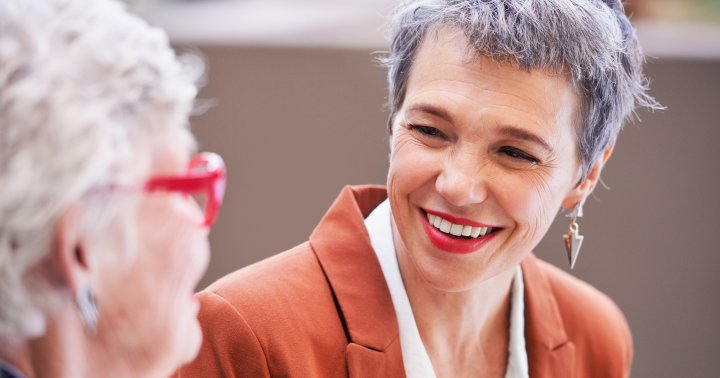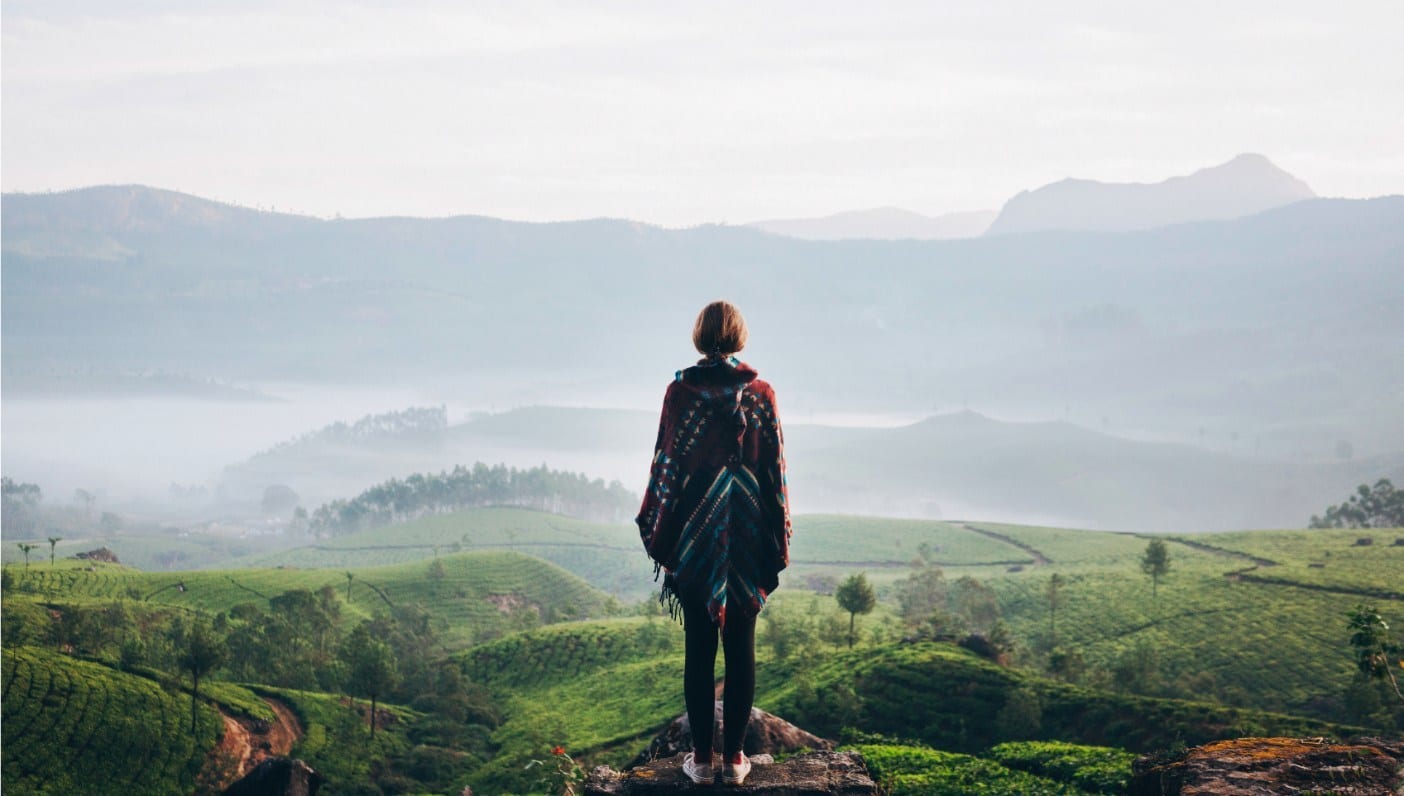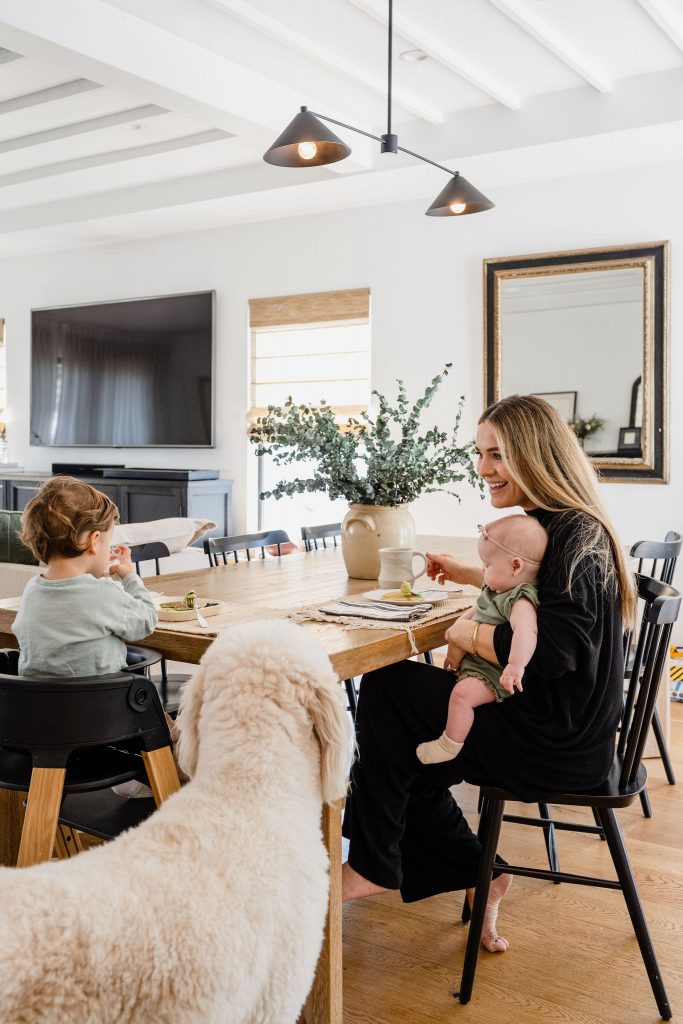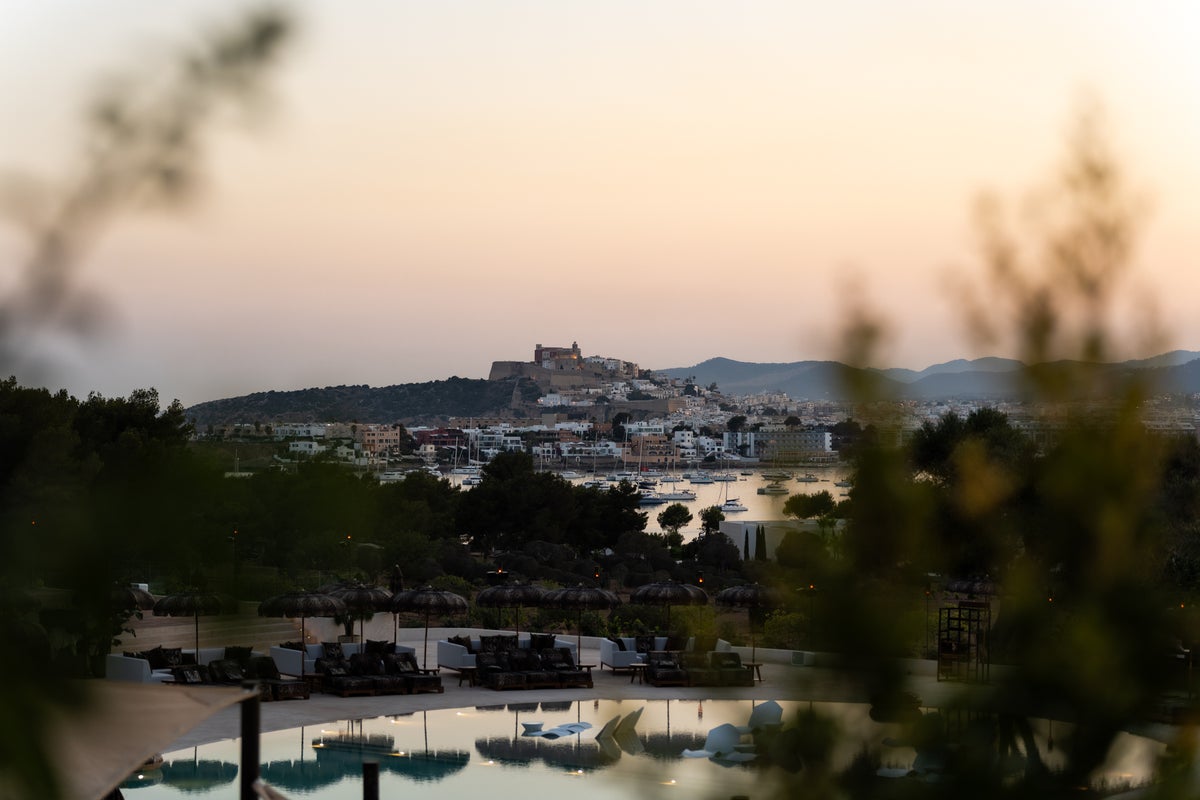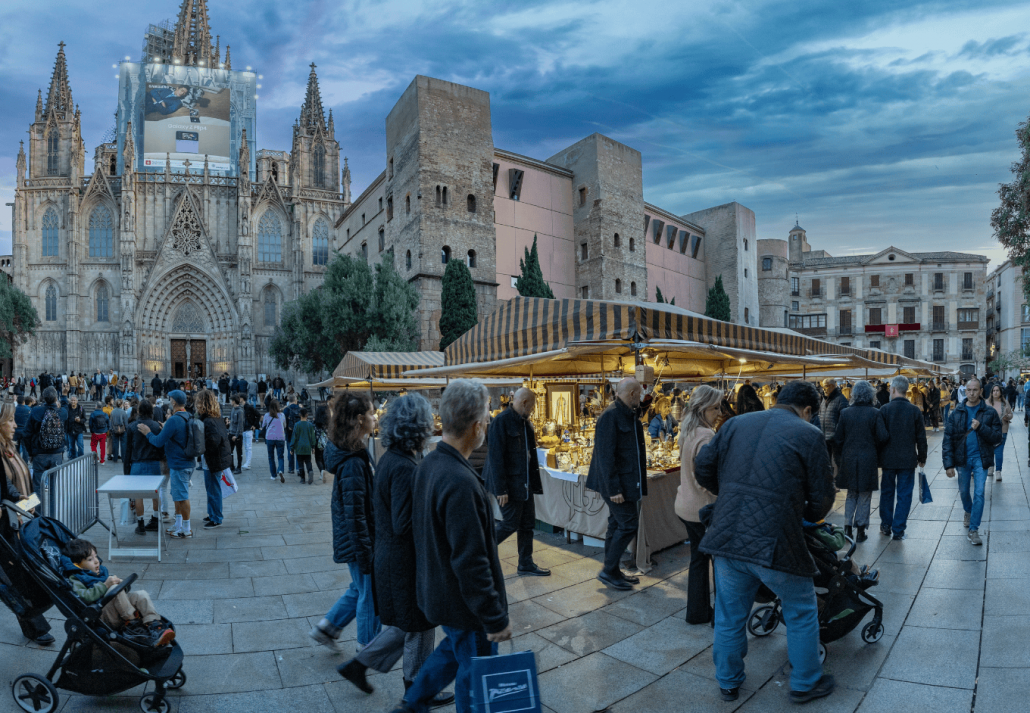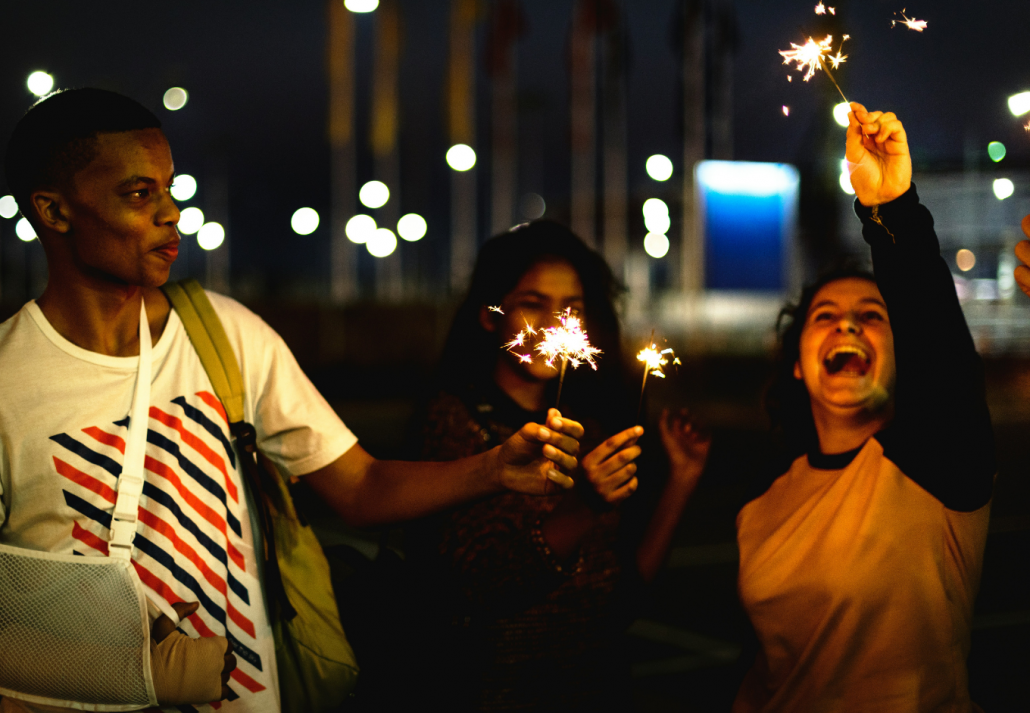Dancing in Nonduality
How partner dancing can teach us to embrace our interdependence The post Dancing in Nonduality first appeared on Tricycle: The Buddhist Review. The post Dancing in Nonduality appeared first on Tricycle: The Buddhist Review.

My friend George leads me out onto the dance floor. When I first arrived at the social dance—held at an old church in New York City’s Upper West Side—I spotted him dancing and laughing with Chloe, another friend of mine. Now, as we walk together, I can feel the energy from his dance with her; he is still bouncy and electric.
We choose a spot on the dance floor close to the band. I recognize the bass player as well as the clarinetist. They are both wearing crisp vintage suits. When I make eye contact with them, we exchange smiles.
George takes my hand in his. We stand side by side waiting for the music to start. I wave to another friend I notice across the dance floor.
“Did you take dance class last night?” George asks me.
I nod.
“What did you learn?”
The band begins to play. This song is “Castle Rock” by Johnny Hodges, and it’s fast and popping. George and I look at each other with wide smiles.
“This new footwork variation,” I start to say. “Let me show …,” but before I have time to finish my sentence, he is already whirling me around.
I’ve been studying different types of dance for most of my adult life, but I started taking swing dance classes three years ago. When I first began, my initial intention was just to learn this particular style, but as I progressed, my interests grew to wanting to learn more about partnership and connection. I wanted to feel how two people can come together with a shared language and specific set of skills to experiment and create something new.
Since then, I’ve learned how to triple step, rock step, and maintain a strong dance frame. I’ve learned how to connect with another person while balancing improvisation, musicality, and rhythm. I’ve also learned about the deep history of swing dance and its roots in the celebrated landscape of African diasporic dances.
What I’ve also discovered—and this has been the most surprising aspect—is that partner dance involves far more than the two people moving together. As a lifelong student of movement and dance, I see both myself and others as constantly evolving blends of interwoven ideas, influences, and realities. We are all connected to larger networks. In this way, partner dance reflects Buddhism’s core teachings of nonduality—the belief that nothing exists in isolation. Nothing is inherently separate. As the ancient Indian philosopher Nagarjuna famously laid out, all things, being empty of fixed substance, interpenetrate and encompass one another. An idea that is nearly impossible to grasp with conceptual logic, phenomena are neither one nor many. “It literally means ‘not two,’ ” says Buddhist scholar and Zen teacher David Loy. “That two things we have understood as separate from one another are in fact not separate at all. They are so dependent upon each other that they are, in effect, two different sides of the same coin.”
This interconnectedness, however, can be challenging to fully embrace. Like many, I’ve long been conditioned to perceive the world through a lens that positions people as separate, subject versus object. In her book You Belong: A Call for Connection, Buddhist teacher Sebene Selassie describes this contradiction as a reflection of Nagarjuna’s doctrine of two truths—the relative and the absolute. “Science and ancient wisdom traditions both tell us that everything is absolutely enmeshed,” she writes. “Our own senses reveal that there are relative differences between things.”
In partner dance, the relative truth of separateness appears as two distinct roles—leader and follower. The leader makes movement suggestions and takes initiative, while the follower interprets the leader’s suggested movement patterns and responds. Historically, these roles have also been gender-specific, where men typically lead and women follow.
When I first started learning swing dance, this dualistic setup felt like a helpful learning container. It reduced confusion for me; my role was focused. I learned steps as a follower, which were separate from the steps that the leaders danced. Since then, as I’ve been exploring nondualist teachings, I have noticed an extraordinary opening toward creativity and playfulness in my dance form. In partner dance, considering the space between the leader and the follower allows dancers to question, blur, and even reverse roles. Last year, I took a workshop that challenged leaders to be more responsive and attuned and take cues from their followers. Followers, in turn, suggest movements to the leaders and guide their partnership’s tone, pace, and direction. At the time, as a person who often followed, I found it exciting and energizing to make suggestions to the leader. This broader perspective encouraged me to take more risks and feel more agency as a dancer.
In the spirit of questioning the static quality between leader and follower roles, there’s also an opportunity to investigate and reflect on the space between and beyond traditional gender roles in partner dance. This isn’t a new concept—historically, the jazz, blues, and swing dance communities embraced and celebrated people who defied traditional gender roles. Gladys Bentley, a famed blues singer and pianist during the Harlem Renaissance, dressed in masculine attire and sang in a deep, booming voice. And in the 1930s and 1940s, dancers like Norma Miller (known as the “Queen of Swing”) and Ann Johnson performed daring and assertive swing dance routines that featured aerials, lifts, and flips. More recently, the famed singer, musician, dancer, and teacher Dawn Hampton advocated for swing dancers to learn how to both lead and follow. Now, anyone can lead and anyone can follow, and I believe that this dynamic is much more expansive. Instead of adhering to traditional gender expectations, partner dance can become deeply human-centric and more finely attuned to emotion, connection, and musicality.
My favorite aspect of partner dance is being part of a community, and this is where I find concepts of interconnectedness most evident. Dancers all learn from one another; a step or style I absorb from another dancer can influence the way I carry myself on the dance floor. And at the start of a single three-minute song, each person arrives at the unique dance partnership carrying a vast and embodied history of dance instruction, movement practices, cultural and ancestral influences, and their own individual energy at that given moment. Beyond each partnership, the music we dance to is also incredibly layered; perhaps the saxophonist was taught by his father and plays just like him, while the lead singer has just fallen in love and her lyrics are infused with heightened verve and hope. I also recognize how vital interconnectedness is to swing dance as a means of honoring the vast legacy of jazz music and Black culture while acknowledging the ongoing legacy of oppression of Black people in the United States. None of these components are separate; I exist as a dancer in this community because all of these factors are intertwined.
When I invite nondancing friends to social dances, they express eagerness to learn, but they sometimes worry that they don’t have a partner. “It’s okay,” I assure them. “We rotate a lot. Everyone dances with everyone!” In fact, the etymology of the word partner reveals that the oldest form of the word—partiner—refers to “a sharer or partaker in something.” In the dance community, a partner isn’t necessarily someone you spend the whole night dancing with to every song; it can be, rather, a person who shares themselves with their community and, in doing so, partakes in meaningful connections with many people.
In her book The Place of Dance: A Somatic Guide to Dancing and Dance Making, dancer and choreographer Andrea Olsen describes how dance is training for uncertainty, for the unknown. “Dance involves both orientation and disorientation: learning from the past, and determined investigation of the new,” she writes. “There is always a tug between training and invention.”
Usually, at the end of a night of social dancing—of connecting and practicing learned steps and styling new ones—I feel tired but fulfilled. I’ve been here many times before, a place where I feel held by a strong sense of satisfaction, where there is no presence of longing. Often, when I’m in this space, I feel most open to the reality that anything can happen.
And it does. Sometimes, just as I’m about to leave, I feel a tap on my shoulder. I turn around and encounter a lovely face with wide open eyes. They ask me a question, which in recent years has perhaps become my favorite question to consider:
“Would you like to dance?”

 ValVades
ValVades 







